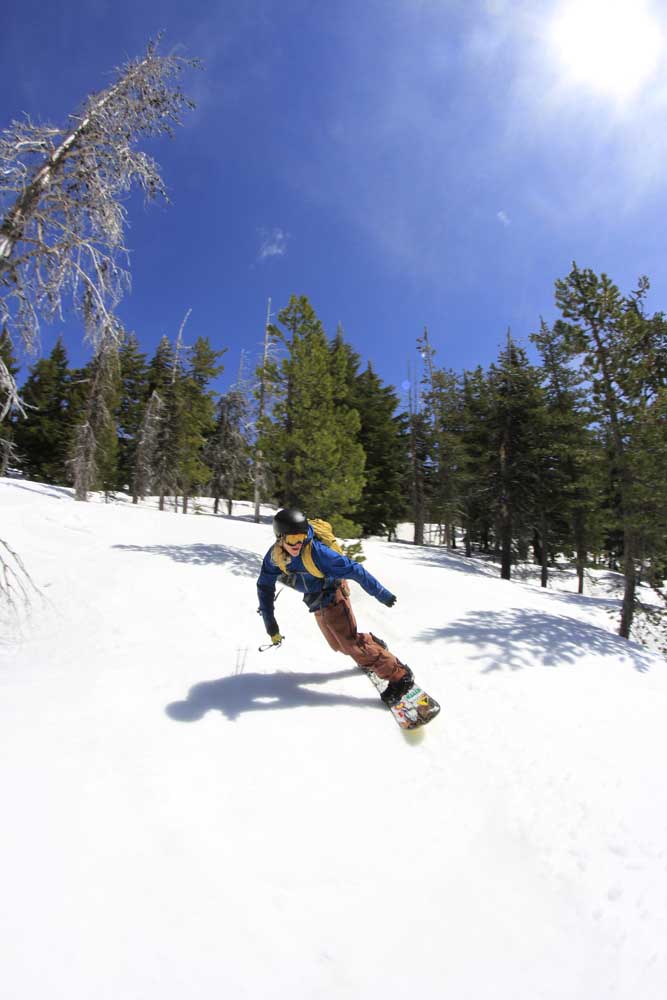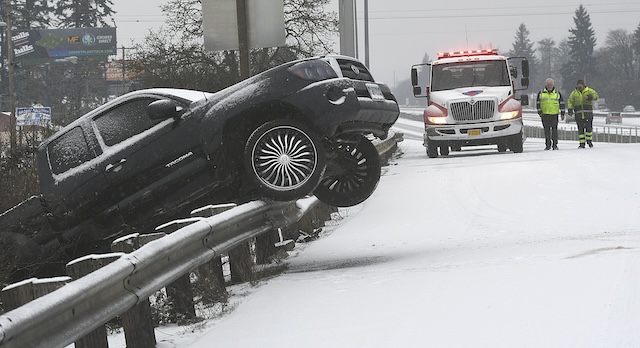Skiing and snowboarding: Escape the crowds by venturing into the backcountry
Published 4:00 am Friday, January 27, 2023

- A snowboarder negotiates the trees as he snowboards back down the south side of Tumalo Mountain.
To escape long chairlift lines and crowded slopes, experienced backcountry skiers and snowboarders in Central Oregon will venture off to mountains such as Broken Top and the Three Sisters.
Dynamic terrain and untouched snow can be found on these major Cascade peaks, yet backcountry rewards can also be had at smaller, more approachable areas.
Here are a few local spots where skiers and riders can escape the crowds to “earn their turns” but also avoid daunting climbs and extreme terrain.
Vista Butte
Just a few miles from Mount Bachelor, Vista Butte Sno-park is basically just some extra space for parking along the shoulder of Century Drive.
From the sno-park, reaching the summit of the 6,619-foot butte to the northeast is a 2.5-mile trek with a 700-foot elevation gain.
Most backcountry skiers use alpine touring or telemark gear and apply climbing skins to their skis to “skin” up the mountain. Snowboarders do the same with split boards.
Vista Butte is a decent option when Bachelor and Tumalo Mountain are getting pounded with wind and snow.
From the top of Vista Butte, snowriders can look out on the vast, snow-covered High Desert, buttes popping up here and there and the rocky cliffs of the Tumalo Falls area visible just to the northeast.
The southern portion of the butte offers the best options for skiing and snowboarding — and riding that direction can place you back near Vista Butte Sno-park.
Most of the snowriding on Vista Butte is among the trees, so skiers and snowboarders should watch out for tree wells, areas around the bases of trees where unconsolidated snow collects and creates potential hazards for an unsuspecting snowrider.
Tam McArthur Rim
With numerous lines on nicely pitched north-facing slopes, Tam McArthur Rim has become a popular destination for backcountry skiing and snowboarding in Central Oregon.
Accessing Tam McArthur Rim (often called Tam Rim) requires a 6-mile snowmobile ride from Upper Three Creek Sno-park, just south of Sisters, to Three Creek Lake.
Jutting 1,500 feet above the lake, the rocky Tam Rim stretches for 2 miles, a scenic invitation for snowriders seeking deep, virgin powder. Located near the lake are a number of yurt dwellings where skiers can stay overnight to maximize their opportunity. Timberline Mountain Guides (which operates Oregon Ski Guides) and Three Sisters Backcountry Inc. offer guided ski trips at Tam Rim, which reaches as high as 7,732 feet in elevation.
Tumalo Mountain
Tumalo Mountain is no secret to backcountry skiers and snowboarders in Central Oregon. Just across Century Drive from Bachelor, 7,775-foot Tumalo is probably the most accessible backcountry spot in the region. Backcountry enthusiasts can spend a full day doing laps up and down the bowl on Tumalo.
The skin track starts at Dutchman Flat Sno-park and climbs 1,400 feet up the south side of the mountain to the summit.
Tumalo is a mixed-used area, and the eastern half of the bowl is open to snowmobiles, but skiers and boarders have the rest of the giant slope all to themselves.
To reach the skin track at Tumalo, drive about 22 miles west of Bend along Century Drive to Dutchman Flat Sno-park, located on the right before you get to Mt. Bachelor’s West Village Lodge. The skin track starts from near the parking area.
Backcountry snowriders should always be prepared with transceivers, probes and shovels and know how to use them in case of an avalanche. They should also check the Central Oregon Avalanche Center website (coavalanche.org) before they head into the backcountry.
The COAC provides avalanche forecasts and backcountry observations on its website as a way of informing backcountry enthusiasts of snow conditions and avalanche risks.
A rundown of some handy equipment for snowriding in the backcountry:
Transceivers, probes and shovels: Transceivers work in case of an avalanche only if both the person who is buried under the snow and those trying to find the victim have them. The devices signal becomes stronger as rescuers get closer to the victim. Probes are long sticks, broken down like tent poles, that are used to search the snow for an avalanche victim. A compact shovel can be used to dig the victim out.
Climbing skins: Nylon material that sticks to the bottom of skis to provide traction on the way up the slope.
Alpine touring skis: Skiers have their heels free while skinning up the hills, and then lock their heels in for coming down the mountain.
Telemark skis: Skiers heels are always free, whether touring or skiing down the slopes.
Splitboard: This snowboard splits in two, allowing the boarder to apply skins for touring and then adjust the two sides into one board for riding.








